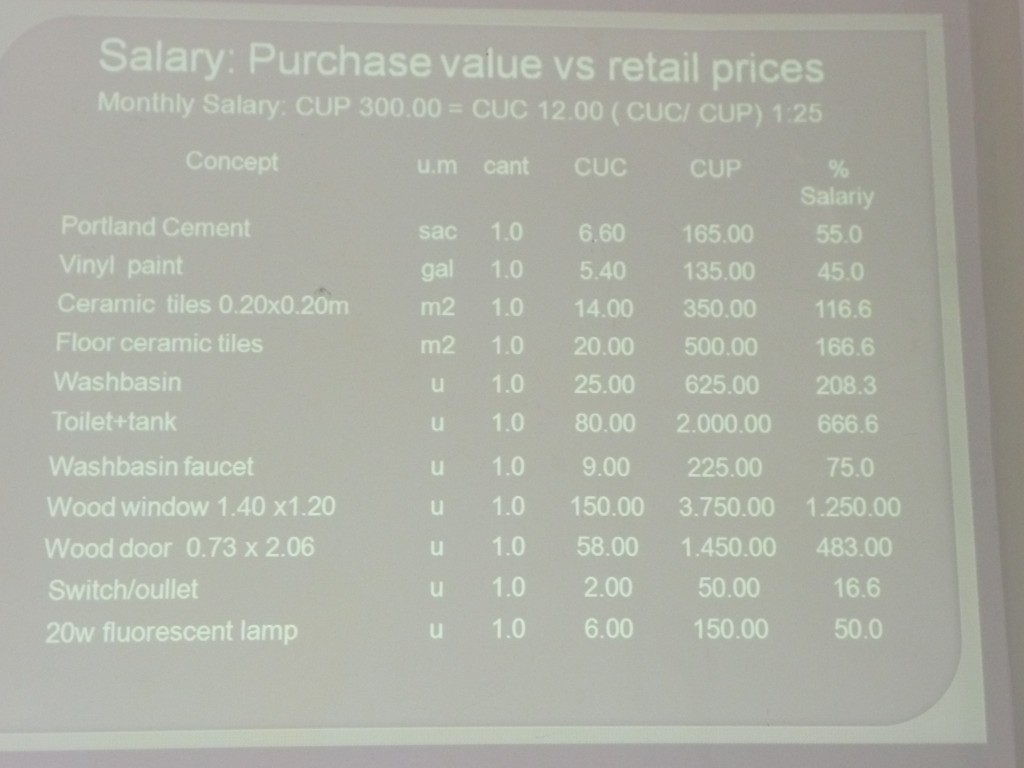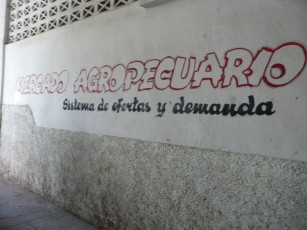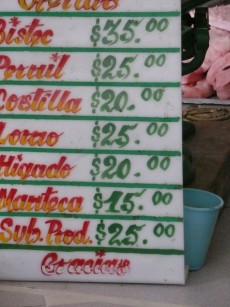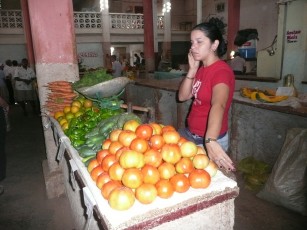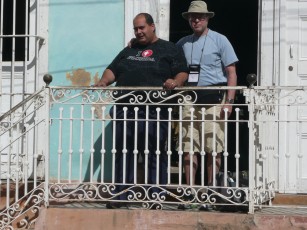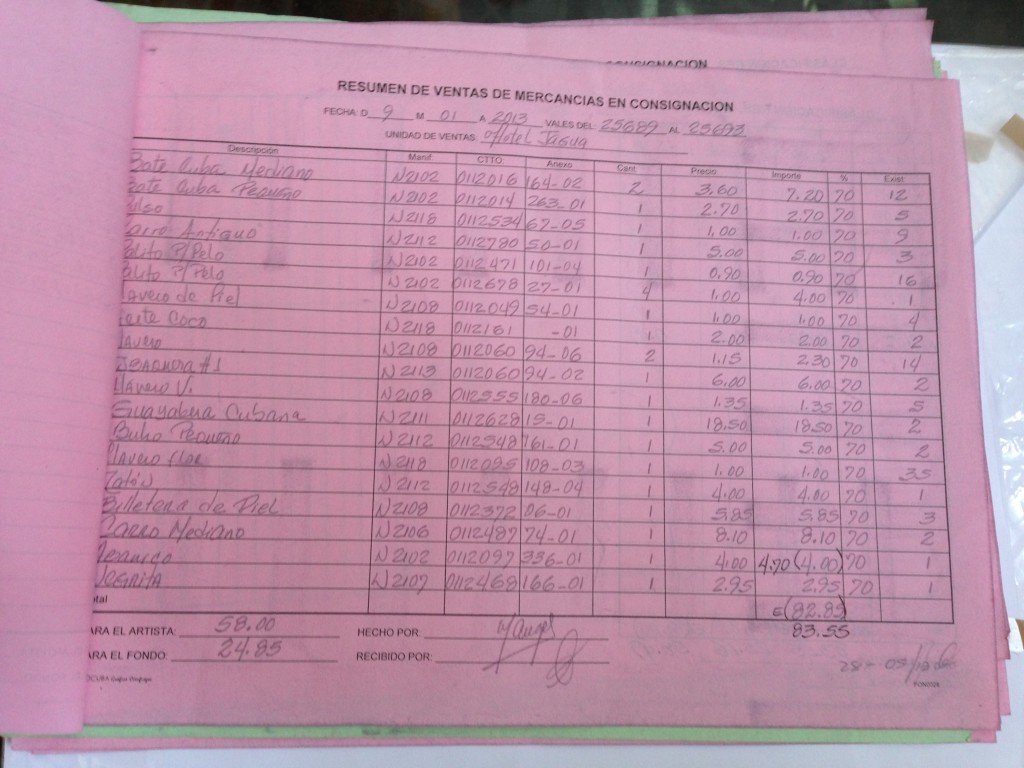This is a preliminary observation of the Cuban economy based on information provided by the local guide and the lectures by the Havana University professors. In addition, my commentary is at the end of the essay.
Under Fidel Castro the Cuban economy enjoyed a boom after he became an ally of the Soviet Union. The Cuban economy was riding high because the Soviet Union and its eastern European satellites bought virtually all of its sugar output—millions of tons annually–at above market prices. With a massive subsidized cash flow from his communist patrons for more than two decades, Castro was able to lift incomes of all workers by holding down prices of basic goods and services, thus fulfilling one goal of The Revolution—social justice, provide free medical care and education through college, pour money into the arts to enhance the nation’s cultural traditions, and create what he thought was a socialist paradise in spite of the U.S. embargo.
Castro’s dream for Cuba turned into a nightmare in the early 1990s with the collapse of the Soviet Union and the liberation of Eastern Europe. With the drying up of Soviet subsidies, Cuba’s GDP plunged at least 35% in two years. Widespread economic distress engulfed Cuba. The economy was then flooded with U.S. dollars as Cuban-Americans stepped up their relief efforts to help out their families. A $100 remittance from the States was equivalent to nearly five months income for the average Cuban. Ironically, Cuban-Americans provided a safety valve for the Castro regime, providing much needed hard currency to the island nation.
The Cuban crisis caused its leaders to do some soul searching: how do they adhere to the goals of The Revolution without the subsidies that were masking the inherent flaws of its collectivist experiment. Without the infrastructure—economic, financial, legal, and social institutions to deliver the goods and services to the people–Cuba has slowly been transforming itself into a mixed economy a la the United States and the rest of the developed nations of the world.
In 1960, a year after taking power, Castro nationalized all housing under the Urban Reform Law. (When a U.S. politician calls for “reform” it too usually means more government intervention in the economy. Beware of “reformers.”). Despite this policy of nationalization, today in socialist Cuba nearly 90% of the housing stock is privately owned.
Much of the new housing is prefab construction, usually apartment complexes in and around Havana and other urban centers. Quality does not seem very good and looks very institutional; in short, drab and unimaginative. Owners of existing apartments are responsible for the care and maintenance of their units. However, because no one owns the apartment building and the “tenant” boards are ineffective, and with the costs of material out of sight, the outside of the buildings are in bad shape. In fact, in Havana, where the average age of the housing stock is 75 years, one to three buildings a day collapse because of the lack of maintenance.
Agriculture is also being transformed in order to increase production by eliminating the collectivist system that was one of The Revolution’s cornerstones. Suffice it to say, farmer’s markets have been created allowing independent farmers and co-ops to sell their produce and meats at market prices. For the average Cuban, meat is a relatively expensive food item. One farmer’s market we stopped by has an inscription on the wall, a “system of supply and demand.” I wonder what Fidel is thinking these days. Maybe the Obama administration needs to learn a few things about evolving free markets from Cuba, allowing supply and demand to determine prices. Here in New Jersey, Governor Christie also needs an object lesson about allowing supply and demand to guide the economy even during the aftermath of a super storm.
Despite the agricultural reforms that are in place, 50% of the arable land is idle. Food has to be imported. Sugar production is a fraction of what it was in the 1980s, but with the world price of sugar four times as higher than it was then, income from sugar exports is holding its own.
Although we did not visit any hospitals and medical clinics, the Cuban health care system has its plusses and minuses. Cuba’s free universal care system is based on an enormous amount of resources that the government has poured into the creation of medical colleges throughout the country. The ratio of doctors per population is the highest in the world. In other words, there are so many doctors in Cuba many of them go overseas for assignments in Africa, and South and Central America. Doctors not paid very well yet students want to go into medicine anyway; it is one sure way to get an opportunity to travel overseas for a multi-year assignment, save a lot of money and come back to Cuba to open a business or improve their living standards.
One of the major drawbacks of the Cuban medical system is the lack of medicine and equipment. In our Miami orientation we were told the doctors are competent, but the lack of medicine makes treatment of patients problematic. Nevertheless, there is vibrant biotech sector, which could emerge as one of the country’s most dynamic sectors.
The Cuban two-tier currency, local pesos and the convertible peso for tourists (CUC, pronounced cooks), is unwieldy and will be unified soon. (There are always rumors when a one-tier system will occur. Cubans do not want to get holding the wrong currency.)
Currently, one CUC equals one U.S. dollar. However, there is a 10% tax on converting dollars into CUCs plus a three percent commission. We received .87 CUC for every dollar we exchanged. Prices for locally produced crafts and other items we were able to bring back are relatively inexpensive. We purchased two pieces of art from the school we visited in Cienfuegos. In other words, tourists do not have much to choose from to bring back to the States. Americans cannot enter the States with Cuban cigars and rum. In Cuba, Americans can smoke to their hearts content and have all the rum and coke, from dawn to late into the night. Ole!
Cuban tourism is on the rise. According to the latest figures, 51% of GDP comes from tourism. At least 400,000 Cuban Americans visit the island annually. In one of our hotels, there were tour groups from France and Germany. The port in Havana is being moved to Mariel, west of the city, where goods from overseas will be unloaded in the future. Speculation is that Havana will become the destination for the cruise lines and potentially hundreds of thousands of American tourists would visit the island by ship in addition to the cultural exchanges occurring now.
In addition, we were told that there are behind the scene discussions between American companies and Cuban officials. When the U.S. embargo is officially lifted, American companies want to be in a position to begin operations with our third closest neighbor. Stay tuned.
Although the Cuban government is freeing up small local enterprises from state control, it is not easy having a small business. In Trinidad we visited a B&B in the center of town run by a 34 year old economist who explained the challenges of running a private business in a country with limited, slow Internet and relatively high taxes. Nevertheless, he keeps meticulous records and shared his data with us. The hostal “El Tayaba can be viewed at http://www.tripadvisor.in/LocationPhotos-g285731-d2035430-Hostal_El_Tayaba-Trinidad_Sancti_Spiritus_Province_Cuba.html#55102927.
At our hotel in Cienfuegos, the clerk showed us the record keeping she keeps of all the merchandise she was selling at one of the counters in the hotel lobby. Needless to say, all entries were made by hand, a far cry from modern computer based bookkeeping.
Last week, a fiber optic cable line became operational in Cuba. The Internet is indispensable to do business with the outside world. The foundation is being laid for Cuba and its people to become integrated fully into the world economy. In addition, while we were in Cuba, the government lifted the ban on overseas travel. Cubans now have more freedom to travel overseas than citizens of “the land of the free.” You cannot make this stuff up.
We visited a local (government) bodega where two women were behind the counter selling the meager inventory on hand. On one wall, a blackboard had the prices of the items for sale and each time a customer bought basic foodstuffs it was noted in the person’s ration book. Additional items could be bought at higher prices. In short, although the government “guarantees” a basic standard of living for everyone, but that amount is at the bare subsistence level. That’s one of the reasons most Cubans have two jobs to boost their living standards.
The best-paid workers are in the service sector catering to tourists earning hard currency. Butchers in the free market are compensated well as are some doctors. Professors are not paid well.
The Cuban leadership has recognized the distortions of collectivism. State payrolls are being slashed, private businesses are expanding, and the government’s goal is to have 40% of GDP in private hands by 2015. In addition, Cuba has one indispensable need, more Foreign Direct Investment.
If Cuba’s leadership realizes that free markets will achieve most of the goals of The Revolution, namely, a better life for all its people without crony capitalism, then they will establish an economy with more free enterprise than the United States. One of the reasons Fidel Castro was so successful in overthrowing the Batista regime is that he was a typical Latin American dictator who oversaw a crony capitalist society, maintaining the political and financial elites stranglehold on the economy’s major sectors.
The Cuban leadership can prevent crony capitalism from taking root in Cuba again and eventually surpass the United States on the index of economic freedom published each year by the Heritage Foundation. In fact, if Cuba does all the right things over the next decade, it could become the Switzerland of the Caribbean, a prosperous, decentralized nation that trades with the rest of the world and minding its own business in foreign affairs. And by expanding civil liberties, press freedom and protecting private property, Cuba could become the next destination for American retirees, only three hours by plane from the New York-NewJersey metropolitan area.
Next: Cuban-American relations
